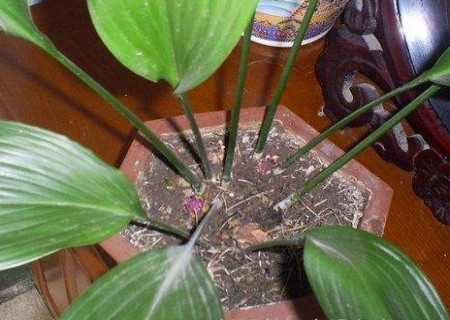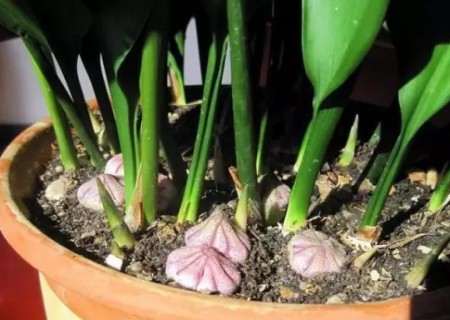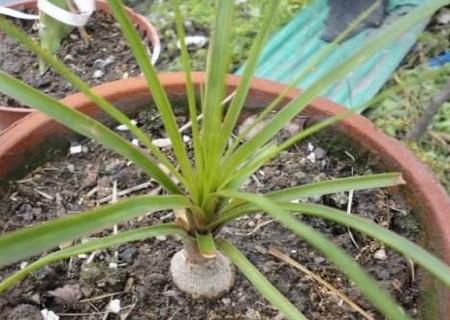How does one-leaf orchid reproduce? Propagation method of one-leaf orchid
The division method is mostly used for the reproduction of Cymbidium, and the sandy loam rich in humus should be selected, and the soil should be moist. In the stage of exuberant growth, thin fertilizer and water should be applied once a week for the plant. It grows well in the bright place without direct sunlight, likes warmth, and avoids severe cold. The ambient temperature should be kept between 15-25 ℃. Pay attention to fully watering the growing season, but pay attention not to make the soil watered.
The split propagation of Cymbidium can be carried out in combination with changing the basin before the temperature rises in spring and the new buds germinate, and the underground rhizome and leaves are divided into several clumps, so that each clump has 3-5 leaves, and then it is planted in the pot and maintained in a semi-shady environment.

The following are the main points of reproduction:
The main results are as follows: 1. Cymbidium is mainly propagated by individual plants, which can be divided in combination with changing pots before the temperature rises in spring and before the new buds germinate.
2. Take the mother plant out of the flowerpot, separate the roots knotted together as much as possible, and cut it into two or more plants with a sharp knife. Each plant should have a considerable root system, and its leaves should be pruned properly so that each clump has 5 leaves in order to survive.
3. Soak the split plant in 1500 times chlorothalonil solution for five minutes, then take out the cool dry, put it in a pot and pour the root or water once.
4. During the growth period, water should be fully watered and often sprayed on the leaf surface to maintain high air humidity. Thin liquid fertilizer can be applied twice a month to promote the germination of new leaves and robust growth.
During propagation, attention should be paid to the selection of ramet time, the application of ramet method and the maintenance after ramet.
1. Ramet time
The ramet propagation of Cymbidium can be divided in combination with changing pots before the temperature rises in spring and before the new buds germinate. It is usually carried out after the soil is thawed in early spring (February and March).
2. Ramet method
Take the mother plant out of the flowerpot, shake off the excess potted soil, separate the roots knotted together as much as possible, and cut it into two or more plants with a sharp knife. Each plant should have a considerable root system, and its leaves should be pruned properly so that each clump has 5 leaves in order to survive.
3. Disinfect in pots
Soak the split plant in 1500 times chlorothalonil solution for five minutes, then take out the cold dry, and then serve. You can also irrigate the root with chlorothalonil immediately after potting.
4. Management after ramet
Put the ramet into the basin and irrigate the root or water once. Because its root system is greatly damaged and its water absorption capacity is very weak, it takes about 3-4 weeks to recover new roots. Therefore, it is necessary to control watering within 3-4 weeks after ramet to avoid rotting roots, but the transpiration of its leaves is not affected. In order to maintain the water balance of leaves, it is necessary to spray the leaf surface one or three times a day (more spraying at high temperature, less spraying at low temperature or no spraying at low temperature). Don't fertilize it these days. After the split, but also pay attention to the sun is too strong, it is best to put in the shade to maintain.
5. Potting or transplanting
At the bottom of the basin, a thick matrix of 2 cm and 3 cm was placed as the filter layer, and then the plant was put in. One of the following substrates can be used in the basin: peat: perlite: ceramsite = 2RV 1; peat: vermiculite = 1RU 1; or peat: slag: haydite = 2RV = 2v1; sawdust: vermiculite: medium coarse river sand = 2:2:1, vegetable garden soil: 3RU 1; or garden soil: medium coarse river sand: sawdust (slag) = 4RU 1RU 2; or paddy soil, pond mud, rotten leaf soil, etc.
Pour water once after the basin, and keep it in a shaded environment for maintenance.
Time: 2019-06-09 Click:
- Prev

How to propagate one-leaf orchid-the method of ramet propagation
The leaf orchid is evergreen all the year round, the leaf shape is straight and straight, the leaf color is dark green and bright, the posture is graceful, elegant and elegant. At the same time, it has strong growth, strong adaptability and strong shade tolerance, so it is an excellent shade-loving foliage plant for indoor greening decoration. Suitable for home and office layout, can be watched alone
- Next

Cutting method of wine bottle orchid
Wine bottle orchid, as a flower with ornamental stems and leaves, uses it to decorate the living room, study room, hotel and venue, all of which give people a novel and chic feeling. It can be planted in a variety of specifications as interior decoration: small plants are planted in exquisite pots and placed on the desk and table, showing elegance and elegance; medium and large potted plants are planted
Related
- Fuxing push coffee new agricultural production and marketing class: lack of small-scale processing plants
- Jujube rice field leisure farm deep ploughing Yilan for five years to create a space for organic food and play
- Nongyu Farm-A trial of organic papaya for brave women with advanced technology
- Four points for attention in the prevention and control of diseases and insect pests of edible fungi
- How to add nutrient solution to Edible Fungi
- Is there any good way to control edible fungus mites?
- Open Inoculation Technology of Edible Fungi
- Is there any clever way to use fertilizer for edible fungus in winter?
- What agents are used to kill the pathogens of edible fungi in the mushroom shed?
- Rapid drying of Edible Fungi

